Gather the ingredients for slow cooker split pea soup
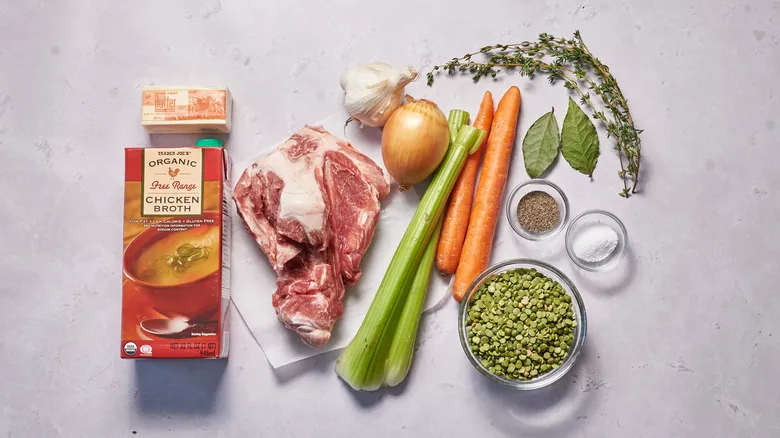
To start, you'll need split peas, which can be either green or yellow. While yellow split peas are an option for this soup, green peas are typically preferred due to their sweeter, richer taste and the classic "pea" flavor they provide, whereas yellow peas have a flavor more akin to lentils. Once you've chosen your peas, gather some butter, onion, garlic, celery, carrots, bay leaves, thyme, and either chicken or vegetable broth. Next, find some pork neck bones; just 1 or 2 pounds will suffice, as a small amount can impart a lot of flavor. Finally, don’t forget to have some salt and pepper on hand for seasoning to taste.
Step 1: Melt the butter
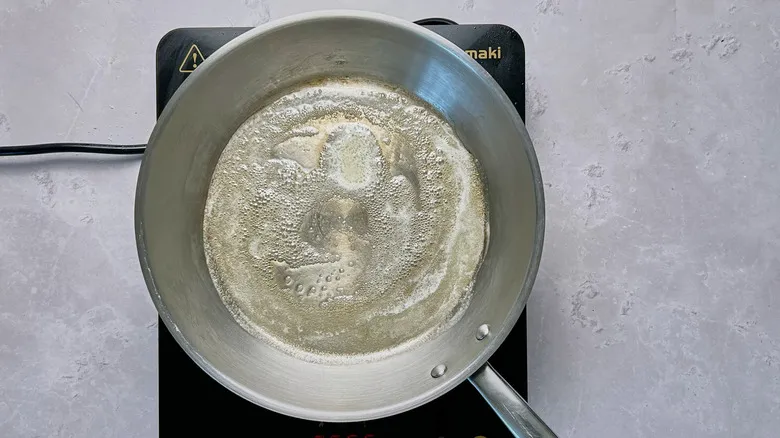
Heat butter in a saucepan over medium heat until it melts.
Step 2: Soften the aromatics

Incorporate the onion, celery, and garlic, and sauté until they become tender, approximately 3 to 4 minutes.
Step 3: Add the peas and pork to the slow cooker
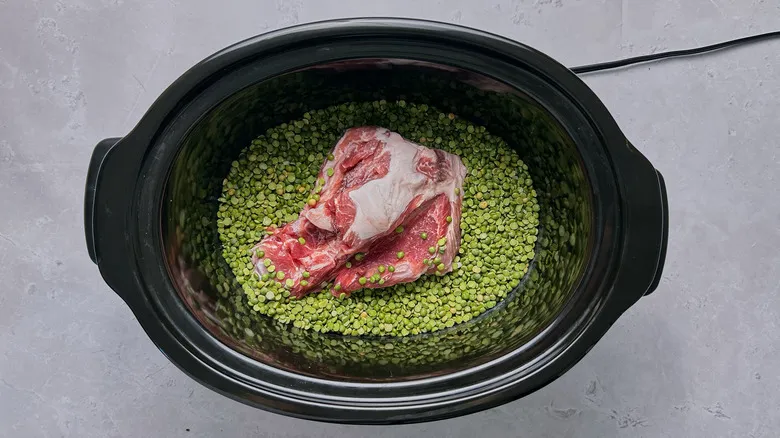
Place split peas and pork bones into a slow cooker.
Step 4: Add the remaining ingredients
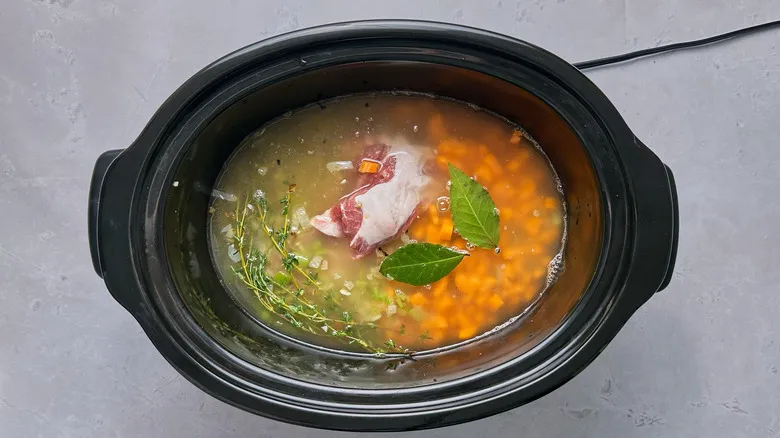
Incorporate the tender vegetables, bay leaves, thyme, carrots, and broth into the slow cooker.
Step 5: Cook
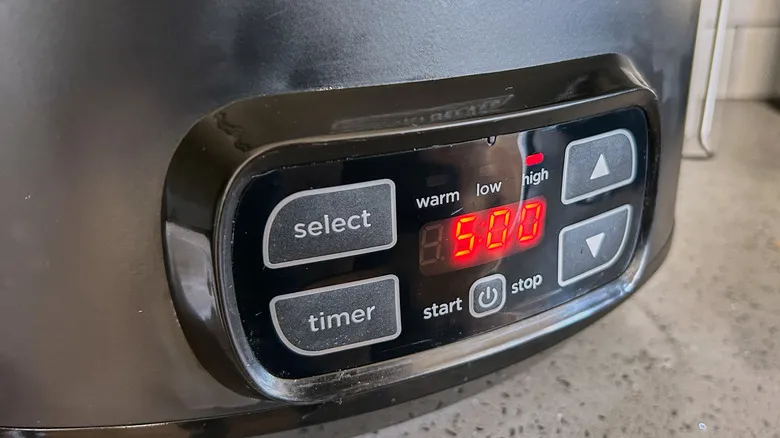
Prepare on low heat for 8 to 9 hours or on high heat for 5 to 6 hours.
Step 6: Remove the inedible parts

Take out the thyme sprigs, bay leaves, and pork bones from the slow cooker.
Step 7: Shred the pork
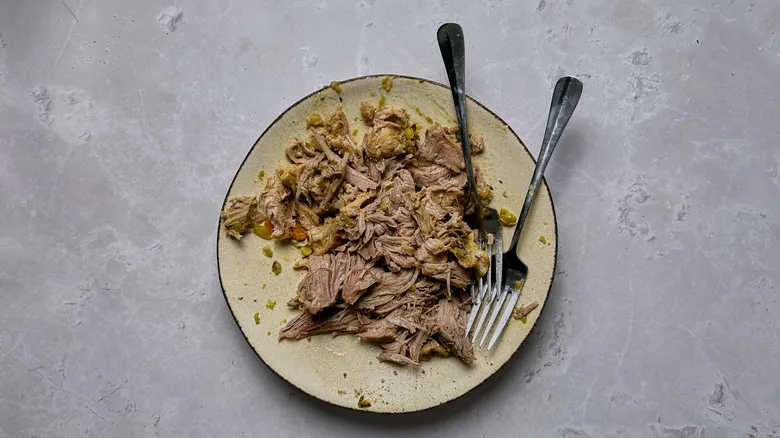
Remove the pork from the bone and add the shredded meat back into the soup.
Step 8: Season and serve
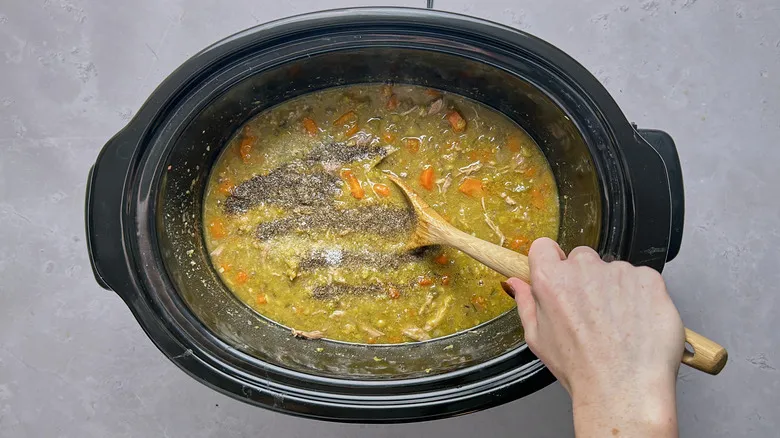
Add salt and pepper to taste, then serve.
What other meats can you use in slow cooker split pea soup?

Pork neck bones are surprisingly easy to come by—once you start searching for them, you'll see them everywhere. They freeze well and add great flavor to dishes, making butchers eager to sell these otherwise overlooked parts of their inventory. If you can't find them or prefer to avoid pork, there are many alternatives available. A bone-in pork shoulder can provide extra meatiness for your pea soup. Smoked ham hocks can deliver a similarly rich flavor as neck bones. You might also consider using turkey legs or necks, which is particularly handy after Thanksgiving. Alternatively, you can forgo the bones altogether and use leftover meats like shredded turkey, rotisserie chicken, or roasted ham. If you opt for leftover meats instead of bones, be sure to adjust the salt and pepper to maintain a rich and flavorful soup.
How do you make split pea soup on the stovetop?
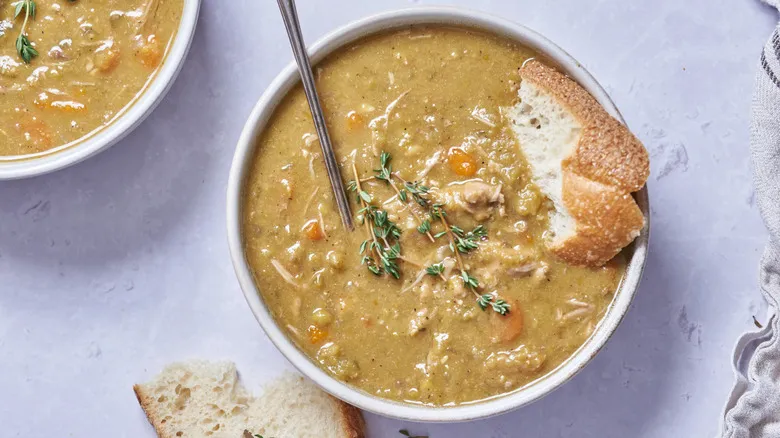
The slow cooker is an excellent choice for making split pea soup, as it allows you to carry on with your day without needing to monitor an open flame. However, you can also prepare the soup on the stovetop. When adapting the recipe for stovetop cooking, keep in mind the difference in heat sources. The slow cooker operates at a low, steady temperature and is covered, creating a steam-filled environment that retains moisture. In contrast, stovetop cooking involves more direct heat, which can lead to evaporation of the liquid.
To make split pea soup on the stovetop, start by sautéing the vegetables directly in the stockpot as instructed. Then, add the split peas, pork, broth, and seasonings, and bring the mixture to a simmer. Reduce the heat to the lowest setting, cover the pot, and let it simmer for 2 to 3 hours, checking every hour to add any evaporated liquid. The soup should thicken but not completely absorb the liquid or stick to the bottom. When the pork easily shreds from the bone and the peas are creamy, the soup is ready to be finished according to the recipe.
Can you make split pea soup vegetarian or vegan?

This soup already features a plant-based protein and can be easily modified for a completely vegetarian or vegan diet. However, the slow-cooked pork bones in the original recipe contribute a depth and richness that you'll need to compensate for in their absence. McGlinn recommends substituting the bones with smoked paprika, liquid smoke, vegan Worcestershire sauce, or soy sauce. Gradually add a small amount of your chosen substitute, tasting as you go, until your vegan soup achieves the savory, umami flavors that are cherished in its meat-based version. After that, simply replace the butter with your preferred vegan cooking fat (like olive oil or vegan butter) and use an equal amount of vegetable broth instead of chicken broth.
How long does split pea soup last?
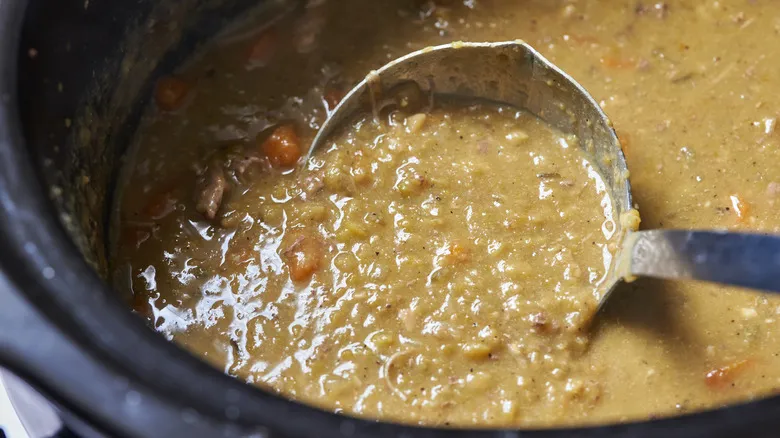
Split pea soup is a great option for meal prep, remaining fresh in the refrigerator for about a week and in the freezer for up to three months (just be sure to use the right container to prevent freezer burn). If the soup becomes too thick while cooling, simply add a splash of milk or water when reheating to restore its original consistency.
What can you serve with split pea soup?
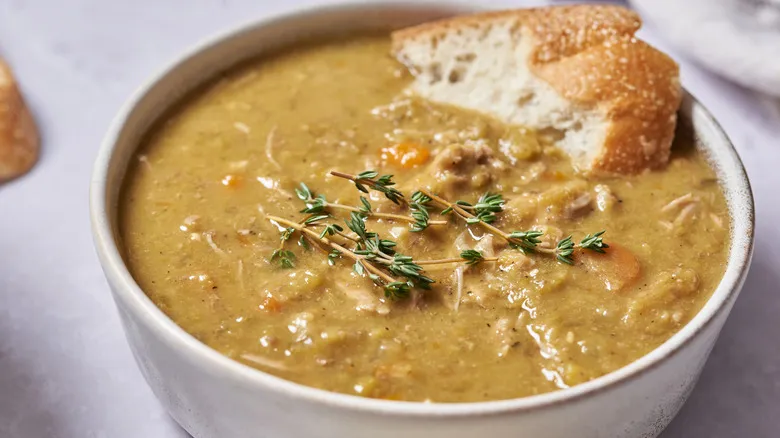
When enjoyed on its own, split pea soup can easily complement a more substantial meal when paired with dishes that reflect its classic, hearty nature. "The simplest choice is warm, crusty bread or focaccia," McGlinn suggests. "Split pea is such a perfect soup for dipping!" The classic combination of soup and salad is also a great fit here. To balance the rich, savory soup, opt for a sandwich that adds a touch of freshness: a pesto Caprese panini would be delightful, while the sweet and savory notes of a Monte Cristo could provide a more indulgent option.
Alternatively, a rustic soup like split pea pairs nicely with other straightforward dishes — consider steak, beef tenderloin, or roasted chicken. No matter which route you take, McGlinn highlights the importance of pairings that enhance the simple, robust flavors of meat, herbs, and vegetables.
Recommended
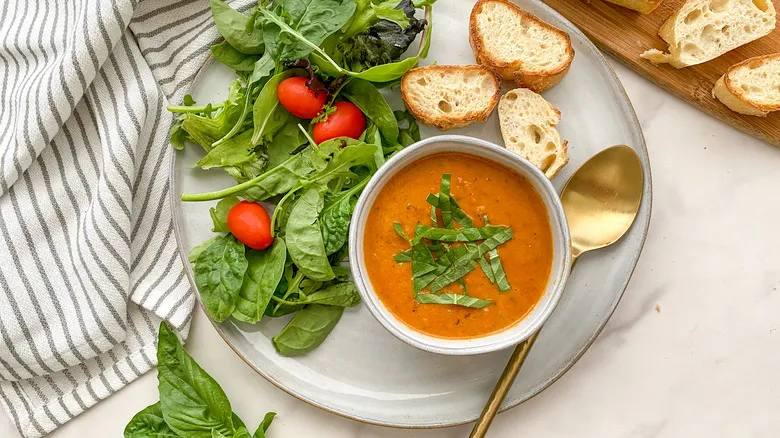
Creamy Roasted Tomato Soup Recipe
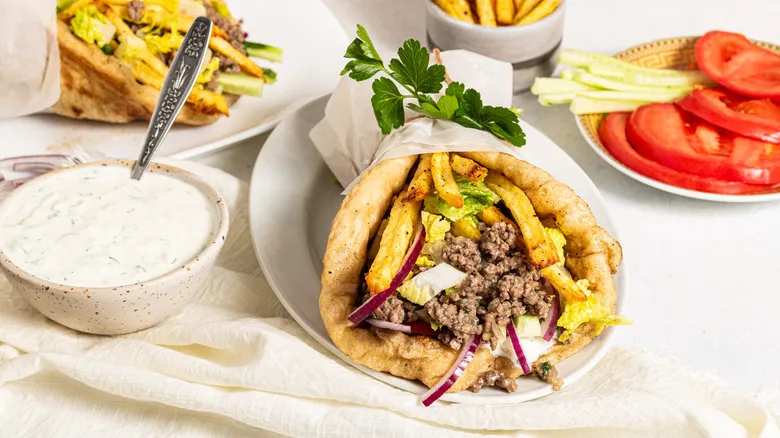
Loaded Ground Beef Gyros Recipe

Bobby Flay's New Mexican Spice-Rubbed Pork Tenderloin Recipe - Exclusive

Paneer Panini With Tikka Masala Jam Recipe
Next up

